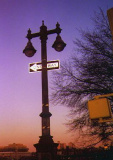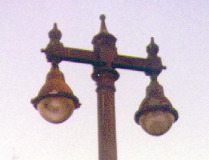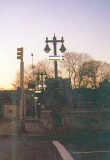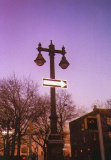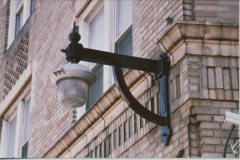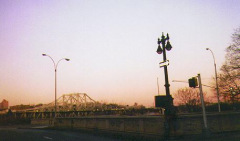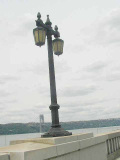They used to light an underpass that brought traffic from Adam Clayton Powell Blvd (formerly 7th Avenue) under the Harlem River Drive.
They’re a New York City lamppost with no other related genus or species–they’re in a class of their own.
They sort of represent an evolutionary midway point between the Beaux Arts twinlamps and the more utilitarian Whitestone or Triborough Bridge twinlamp designs.
The Harlem River Drive, however, has been here only since the 1950s, and these poles, and the underpass they serve, have been here at 7th Avenue and 153rd Street longer than that.
It’s likely the underpass served as a way to get traffic under and around the massive 155th Street viaduct which led to the 1895 Macombs Dam Bridge.
According to the Friends of Cast Iron Architecture, these poles originally had octagonal-shaped glass luminaires.
Sometime in the 40s or 50s, these were replaced by the ‘tear-drop’ or ‘cuplight’ luminaires that dominated NYC streets in the 50s before the greenish-white mercury lamps took over in the early 1960s.
Though these poles are used mainly to hold one-way signs these days…most of the cuplight luminaires are gone and the remaining ones don’t light up anymore…
…they are landmarked. But that’s no guarantee of eternal preservation!
Will these venerable poles continue to guard the Macombs Dam Bridge for the foreseeable future?
I “discovered” a group of lampposts from the same species on Riverside Drive and West 158th Street. There are a couple dozen of them on the Riverside Drive viaduct, along with modern reproductions of Henry Bacon park lamps, between W. 158th and W. 160th Street. These lamps apparently have been allowed to keep their original eight-paned octagonal luminaires.
LEFT: Wall-lamp version on Riverside Drive.



